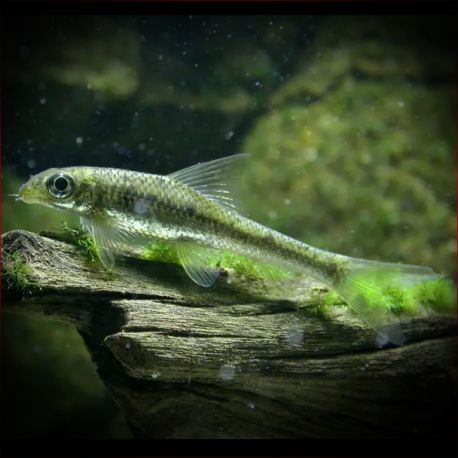Crossocheilus Latius
Cypriniformes Print
More info
Datasheet
| Minimum Tank Size | 300 litres / 79.25 US gallons |
| Maximum Size | 15.0cm / 5.91inches |
| Temperature | 15°C / 59.00°F - 25°C / 77.00°F |
| Hardness | 2.02dgH / 36ppm - 15.02dgH / 268ppm |
| pH | 6.0-7.5 |
General Description
Crossocheilus Latius, commonly known as C. latius, is a species under the Cyprinidae family. It is characterized by possessing 8 branched dorsal fin rays, immobile rostral lobes, lacking a dorsal spine, and having unconnected upper and lower lips. The fish typically reaches a maximum size of 15.0cm and is native to various countries, including India, China, Myanmar, and Afghanistan.
Aquarium Setup
To best mimic its natural habitat and promote well-being, C. latius thrives in tanks designed to resemble flowing rivers or streams, with substrates of rocks, gravel, and water-worn boulders. Driftwood branches can be added to create hiding spots and shaded areas. While most plant species may struggle, hardy varieties like Microsorum, Bolbitis, or Anubias can be attached to the decor. Bright lighting encourages algae growth, which serves as a natural food source for the fish. Clean, oxygen-rich water with moderate flow is crucial, demanding the use of external filters or powerheads to maintain pristine conditions.
Behaviour
C. latius is generally peaceful and social during its juvenile stage, displaying gregarious and active behavior. However, as adults, they tend to become more sedentary and solitary, despite maintaining peaceful interactions with one another. When kept in an environment resembling its natural habitat, the fish exhibits more typical behaviors, such as browsing biofilm on rocks and ascending to midwater to feed.
Feeding and Diet
In their natural habitats, Crossocheilus species graze on aufwuchs, feeding on algae, diatoms, and phytoplankton. In aquariums, a diet rich in protein should be avoided as these fish struggle to metabolize certain components efficiently. High-quality dried foods supplemented with Spirulina are recommended, along with fresh vegetables like shelled peas, courgette, spinach, and fruits. C. latius may also consume "black brush" algae (BBA) and other types of algae present in the tank.
Reproduction & Dimorphism
Reproduction of C. latius is not known to occur in captivity, but in their natural habitats, they partake in seasonal reproductive migrations. Female fish are typically thicker-bodied than males, making sexual differentiation challenging in young fish based solely on external characteristics.
Habitat and Distribution
C. latius is found in diverse habitat types, from lower Himalayan hill streams with boulders and gravel to slower tributaries with muddy substrates. Human activities, like river channel damming, have expanded their presence to permanent bodies of water. The species has been recorded in various countries across Asia, including India, Iran, Nepal, China, and Bangladesh, although taxonomy discrepancies may exist within different regions.

